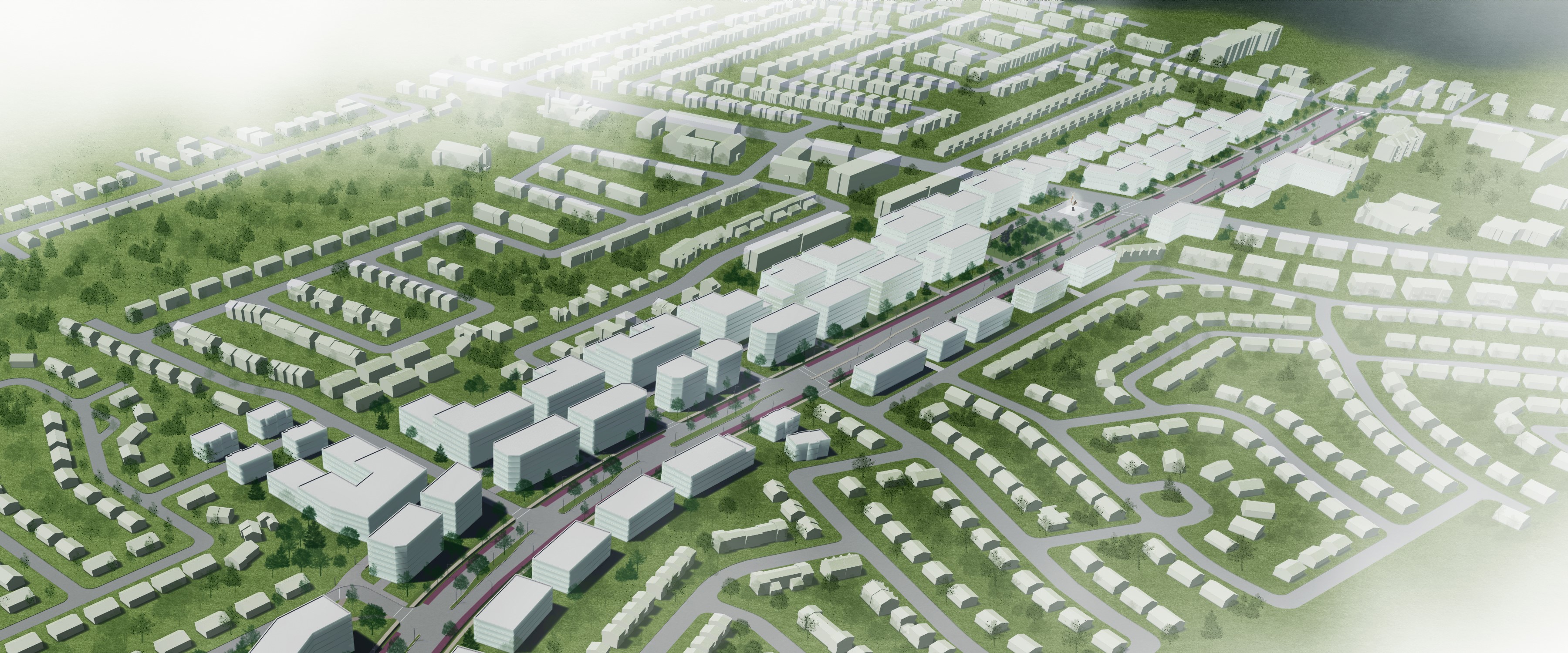Land Uses, Density and Building Heights
The land uses are used to divide the territory into areas that will make it possible for the development vision to be achieved. For each land use, urban functions are identified as compatible, dominant or complementary. A dominant function means that the urban planning by-laws will need to regulate the uses in order to ensure that it is represented in more than 50% of the zones. Conversely, complementary functions will need to be represented in less than 50% of zones.
In addition to compatible functions, land uses that authorize residential use propose a minimum gross land occupation density expressed in dwellings/hectare.
Beyond the land uses and density, maximum heights are prescribed per area to ensure an appropriate transition between the existing residential areas and the areas that will be redeveloped or requalified.
contextualization
Land Uses, Density and Building Heights
The land uses are used to divide the territory into areas that will make it possible for the development vision to be achieved. For each land use, urban functions are identified as compatible, dominant or complementary. A dominant function means that the urban planning by-laws will need to regulate the uses in order to ensure that it is represented in more than 50% of the zones. Conversely, complementary functions will need to be represented in less than 50% of zones.
In addition to compatible functions, land uses that authorize residential use propose a minimum gross land occupation density expressed in dwellings/hectare.
Beyond the land uses and density, maximum heights are prescribed per area to ensure an appropriate transition between the existing residential areas and the areas that will be redeveloped or requalified.
Note : The "map mode" allows you to consult proposals that are geolocated. The proposals are identified by pins or delimited zones. To consult the non-geolocated proposals, switch to list mode.









Moderation
Your message was toggled as suspicious, do you want to confirm the submission? If yes we will review your message before it appears.
Lien vers nos règles de modération